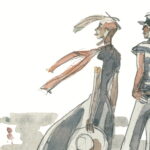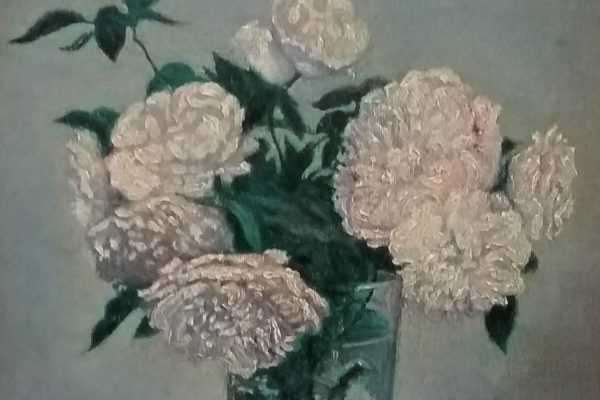– second part –
Form
One relevant question about Oroonoko is to which genre it belongs but the answer is not clear at the first sight. Pacheco simply refers to it as a novella without questioning this definition or showing interest about it, on the contrary Berker [1] refers to Behn’s work calling it a novel. In fact these two authoresses, as many others, analyzed the text mainly for its content than for its form so they didn’t explain these two definitions. The truth is that the work in question is a hybrid, highly difficult to classify. Behn’s work was written in a period of transition not only politically speaking, as said at the beginning of this paper, but also in the literary field.
Usually when there is a huge historical change it is accompanied by a switch in the literary
form to find a more suitable way to report a new reality. Even though the book, or the novella, is written in the period of the rising of the novel it is not part of this genre, it is so mainly because of the intent with which the author wrote it. Indeed Behn was more interested about the content not about the form of this text but it is not a common trait of her career. For example in “Love letters…” it is possible to see a great concern about experimentalism [2] of the form because of how she shapes her work. However in Oroonoko it is clear that the main preoccupation of the author is talking about the concept of honor as an aristocratic value. It seems clear that Behn with this work aims to elevate the character of the price Oroonoko as a role model not only for nobles but also for the subjects. The protagonist is an ideal which has the purpose to underline the different qualities possessed by the nobility. The main focus of the text is clearly to reinforce Behn’s royalist position while stressing contemporary society’s faults.
Is interesting to notice that the form in which the author explains her peculiar point of view is a mixed text that resembles both the exemplary history of the puritan tradition and the secular genre of travel literature. The prince is an example for the whole human kind such as everyman in Bunyan’s “Pilgrim’s progress” but in a different way. First of all Oroonoko is not seeking redemption during his roam from one place to the other and his trip is compulsory. The prince does not need to find something at the end of the road because he endorses the paradigm of the honourable man since the beginning of the story.
At the same time Behn’s work is really close to the genre of travel literature
because all the descriptive digressions about exotic landscapes and customs. The taste for incredible wonders is clear in the text expecially in two parts, at the beginning when the narrator describes Oroooko’s nation and in the middle of the book when are told all the amazing accomplishments of the protagonists or when there are descriptive digressions:
‘Tis a continent whose vast extent was never yet known,and may contain more noble earth than all the universe besides, for they say it reachesfrom East to Westone way as far as China, and another to Peru. It affords all things both for beauty and use; [3]
As Pacheco [4] notices “by supplying evidence of societies that had no knowledge of God, travel literature of the seventeenth and eighteenth centuries succeeded in putting severe pressure on this traditional prop of Christian churches”. Combining these two opposite traditions is what allows Behn to reconcile her conservative ideals with modern ethic. In the text it is possible to individuate a process of secularization of values and virtues that begins with modernity and it is still in act. This process is achieved also with the mix of the literary forms that collaborate to create this text. However analysing the development of the text is possible to see that in a certain way it mirrors the evolution in society with the mix of the literary forms and is possible to consider some interesting elements about the way she wrote. There is a movement in the text, from the beginning to the end, that can be compared with the process of evolution of the genres. “Oroonoko” starts as something highly connected with the public sphere not only because in the preface the authoress refers to the didactic value of her book but also because the first part of the work resembles the old roman de geste.
The first section of the text presents a huge connection with chivalric romance
and it is possible to detect it from some hints. One of this is the topic of the eyes as a medium of love. In french romance and in Petrarchan poetry they are connected with love but here they can be seen as well as a way to disguise the sentiments (the private part of life) in public. When Imoninda is obliged to live in the Otan, the king’s castle, the love between the couple is maintained and discovered because of the eyes:
The prince was laid on another carpet at the other end of the room, with his eyes fixed on the object of his soul; and as she turned, or moved, so did they, and she alone gave his eyes and soul their motions; nor did Imoninda employ her eyes to any other use than in beholding with infinite pleasure the joy she produced in those of the prince.[5]
Romance, with which this section presents a strong connection, is a conservative genre that represents an old order of things. This formal point is important because it bears with it political issues. It’s a reference to a world that no longer exists, a realm dominated by the value of honour in which modern mentality was totally absent. This world falls apart as soon as Oroonoko is captured and became a slave.
In the second part instead there is an evolution in Behn’s style and the form becomes closer to that of travel literature. There is a shift in the text and the reader enters a new word dominated by the economic value but the main character is not conscious of it. The lack of knowledge is the ruin of the protagonist that follows the old value of honour in a world in which it lost its meaning. At this point of the narration the text resembles travel literature mainly because of the profusion of description that slow down the rhythm of the story. The author seems more interested in entertaining the readers than in telling a story, this abundance of details can be reconnected with the will of being trusted. This was a common trait in this literary genre as Tieje underlines in his essay[6].
In the end the third part shows a strong connection with the novel
because the change of the narrator’s type and the description of the protagonist suffering. The author alternates slow paced sequences loaded with descriptions with others in which the happenings quickly follow one another. The rhythm is closer to the novel’s one and there is the description of the interiority of the characters. For the first time in the text the reader knows why the characters are acting in a certain way and the whole section is emotionally loaded. However it should be said that even this part of the book does not adheres at the genre of the novel mainly because Oroonoko is still a symbol and his history has a universal meaning. It is possible to see here that the separation between public and private is not clear even if there is a hint of a private dimension and it is possible to notice it mainly in two moments. First in the episode in the woods, in which Oroonoko kills Imoninda, the reader realizes that this is a moment of privacy in which the voice of the narrator allows a spectator’s perspective. The other moment is when the protagonist is tortured and killed in one of the most brutal ways. The narrator’s voice in the third person and it describes the lonely martyrdom of the protagonist.
Preface
Starting from the beginning of the text it seems necessary to underline the presence of a preface that explains what the author is going to do with her text. Like “Robinson Crusoe”, “Pamela” or even “Gulliver’s Travels” early novels always have an introduction which explains the intent of the writer and legitimize the purpose of the work. This explanatory introduction usually disappears while the genre becomes codified and for example in Austen, already at the end of eighteenth century, there is no trace of this kind of introduction. This element indicates that a new genre is arising. All the (proto)novels in this period have a preface, it is needed because they are starting something new. Even though “Oroonoko” is not a novel it is on the right way to be one because it has all the early traits that show that a new genre is coming into being. In its introduction there is a comparison between literature and painting, it means a conscience about the artistic role the author is going to cover: “a poet is a painter in his way; he draws to the life, but in another kind”[7]. Literature, as art in general, is a way to preserve history and to learn from the past; so Behn clarifies that the main aim of her work is to giving an exemplary story for the “lazy nobility”[8]. Moreover she stresses very often that the story is real and that she participated into the facts especially in the preface of the book:
This is a true story of a man gallant enough to merit your protection;and, had he always been so fortunate, he had not made so inglorious an end: the royal slave I had the honour to know in my travels to the other world; and thought I had none above me in that country, yet I wanted power to preserve this great man.[9]
Indeed all the early novelist from Richardson to Swift need to stress the truthfulness of their works even if the purpose of such declarations is not always the same (this can be dictated by their will to legitimize the novel or by parodic ends). Tieje in his essay about pre-richardsonian fiction undelines that:
Authors’ declaration of veracity date back to the Greek novel, and are found in abundance during the régime of the chivalric romance and the Italian novella, but it is chiefly during the 17th century that three motives governing this veracityare widely proclaimed-the wickedness of lying, the utility of verified narrative, and the pleasure which truth affords a reader.[10]
Considering this is possible to reconnect Behn’s work to a wider tradition in prose.We should add also that it is possible to see a connection with the earliest novels in the intent of giving a role model in the figure of the main character. As in Robinson Crusoe for example we have an exemplary history that is connected with English religious writing and background (puritans) but all the matter is secularized. If Robinson bears with him the values of a progressive ideology (and it ends well) on the other hand Behn, in “Oroonoko”, tries to demonstrate the advantages of conservative ideology and the faults of the progressive one. The tragic ending of the book suggests that even the author is aware of the crisis of the values she is trying to reinforce.
In Oroonoko the preface is a kind of captatio benevolentia
not because of the mention of the Lord but mainly because it refers to the public and to the intent of her work. In this introduction is possible to see all the elements that will characterise the text later. This edifying intent connects Behn’s work with puritan’s exemplary histories which aimed mainly to give a role model to the reader and so with the first novels. As Robinson Crusoe or Pamela, Oroonoko is an example of virtue but if the protagonists of Defoe and Richardson bear with them all the implication of progressive ideology Behn loads her text with reference to the conservative one. It is possible to argue that since the preface the reader perceives a double nature in the text. On the one hand Oroonoko results highly connected with tradition and it has almost an allegoric value.
On the other it is possible to see the work as a private history of a lonely man that has to face the tragedy of being a superior human in a word where mediocrity and falseness always win. The prince is both an allegory and a human being even though the author underlines more his symbolic value than his individual nature. For this reason, even if the prose and the structure of Oroonoko resembles that of the novel, it is impossible to argue that it belongs to this genre. In conclusion what I tried to show was the instability of both form and content of Aphra Behn’s work. This trait of the book is connected with the instability of society under cultural and political perspectives. Seventeenth century England was changing very fast and the categories of public and private were still in development. The book reflect this crisis and this instability of values; with its mixed form Behn’s work mirrors the contradiction of the beginning of modern era and its new ideology.
Note
- [1] Spencer, J. The Rise of the Woman Novelist, Basil Blackwell inc. (1989);
- [2] See McKeon’s analysis in Secret History of Domesticity;
- [3] Behn, A. Op. Cit. p47;
- [4] Wootton Via Pacheco, A. (2013). “Little Religion” but “Admirable Morals”: Christianity and Honor in Aphra Behn’s Oroonoko. Modern Philology, 111(2), 253-280. P268;
- [5] Behn, A. Op. Cit. p 24;
- [6] Tieje, A.J. A Peculiar Phase of the Theory of Realism in Pre-Richardsonian Fiction, PMLA, Vol.28, No.2 (1913), pp. 213-252. Retrieved from https://www.jstor.org/stable/457041;
- [7] Behn, A. Op. Cit. p3;
- [8] Ivi, p4;
- [9] Ivi, p 5;
- [10] Tieje, A.J. Op. Cit. p215;
Bibliography
- Astell, M. Reflections upon Marriage, 3rd ed. (1706);
- Behn, A. Oroonoko and Other Writings, Oxford University Press (2009);
- Chernaik,W. Captains and Slaves: Aphra Behn and the rhetoric of republicanism. Seventeenth Century, 17(1), 97. (2002);
- Defoe, D. A Review of the State of the English Nation (1704-13) vol. III, no. 5;
- Filmer, R. Patriarcha (written 1636-41, printed 1680);
- Habermas, J. The Structural Trasformation of the Public Sphere, The MIT Press, Cambridge, Massachusetts (1962);
- McKeon, M. The Secret History of Domesticity: Public, Private, and the Division of Knowledge. Baltimore, US: Johns Hopkins University Press, 2009;
- Pacheco, A. Royalism and honor in Aphra Behn’s “Oroonoko”Studies in English Literature, 1500-1900, 34 (3), 491. (1994) Retrieved from https://search-proquest-com.bibezproxy.uca.es/docview/1297398426?accountid=14495;
- Pacheco, A. (2013). “Little Religion” but “Admirable Morals”: Christianity and Honor in Aphra Behn’s Oroonoko. Modern Philology, 111(2), 253-280;
- Spencer, J. The Rise of the Woman Novelist, Basil Blackwell inc. (1989);
- Tieje, A.J. A Peculiar Phase of the Theory of Realism in Pre-Richardsonian Fiction, PMLA, Vol.28, No.2 (1913), pp. 213-252. Retrieved from https://www.jstor.org/stable/457041;
Articolo di
Simona Ciavolella
Notes









